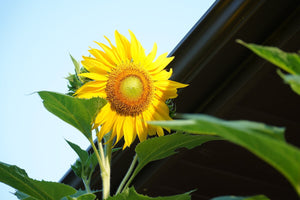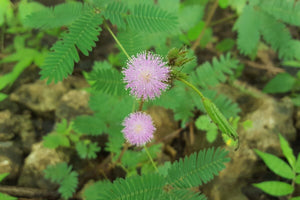Don't Miss This Stunning Perennial: Blanket Flower (Gaillardia aristata)
Blanket flowerAre you looking for a low-maintenance, show-stopping flower with a very long bloom time? Blanket Flower (Gaillardia aristata) is what you’re looking for! You’ll love growing this beautiful perennial. Follow our easy seed-starting tips to grow Gaillardia or Blanket Flower in your garden.

Blanket Flower is a uniquely colored flower. The bright display of petals that blend from red to yellow make you stop and take a second look.
From small bud to seedhead, it always has a visual statement to make. Blanket Flower is a sun-loving, low-maintenance perennial that you’ll grow to love.
These heirloom blanket flower seeds are a hardy perennial. They can tolerate drought and readily self-seed.
Heirloom gaillardia is much better than hybrids at tolerating poor soil, cold, and drought.
This variety grows 2 to 3 feet tall.
How to Grow Blanket Flower from Seed
Unlike some perennial flowers, blanket flowers will bloom the first year. So, no matter when you plant them, you’ll be able to enjoy their unique flowers.
Blanket flower plants can be started from seed indoors or planted directly in the garden when the temperatures are warm. The first year I planted blanket flowers, I direct sowed the seeds in late summer. They still had time to start blooming and kept going even after a night of light frost.
Blanket flowers are a beautiful short-lived perennial, meaning they will die off after a few years. But they readily self-seed, so they will keep growing back in the same area. They’re perfect for wildflower and cottage gardens.

Fool-proof Blanket Flower Seed Germination Tips
Starting seeds indoors means your blanket flowers will start producing blooms sooner.
These tips will help you successfully germinate seeds indoors.
Start seeds indoors 6 to 8 weeks before the last frost.
Gaillardia seeds need light to germinate.
Gently press seeds into moist growing medium.
Keep grow lights close to prevent leggy seedlings.
Use a heat mat to keep the soil temperature at 70-75ºF.
Keep the soil moist until seeds germinate in 14 to 21 days.
Transplant out when all danger of frost is passed. Be sure to harden off seedlings by slowing acclimating them to outdoor conditions.

Caring for Blanket Flower Plants
These beautiful perennials start small but can spread up to 20 inches for each plant. Give them room to grow. Space plants 12 to 18 inches apart. Choose a sunny location with well-draining soil. Since they are a perennial, give them a place where you can enjoy having them come back year after year. Also, they self-seed, and the seeds blow, so be warned.
Sun
Full sun is best for these sun-loving plants. Blanket flowers are perfect for those spots in your garden where you need some bright color that won’t wilt in the sun.
Soil
Blanket Flowers are very tolerant of poor soil and will thrive in well-draining sandy soil.
They also don’t need extra fertilizer.
Water
These hardy flowers are drought tolerant once the roots are established. In the first year, you will want to give them about 1 inch of water per week. Then, only water during very hot and dry spells.
Deadheading
You don't have to deadhead blanket flowers, but they will continue to grow more flowers as you cut them off.
Overwintering Blanket Flowers
Blanket Flowers are very adaptable and hardy in zones 3 to 10. They survive hot summers and freezing winters as cold as -20ºF. To help them survive the winter, cut the plants back to about 6 inches above the ground.
You can cover the plants with mulch to help prevent freeze/thaw changes, but remember to remove it in the spring. Cold, wet soil in the winter can kill the roots. Dry soil will be better for them to survive winter.
To keep Blanket Flowers healthy, they can be divided in fall or early spring while they are still dormant. Dividing is also recommended since their roots slowly spread outward, leaving the center bare.

Harvesting for Cut Flowers
Blanket Flowers are interesting at every stage, from flower buds to dried seed heads. To harvest for fresh arrangements, cut flowers in the morning when the dew is drying and before the sun has heated them up.
Flowers left on the plant will develop beautiful seedheads that are also interesting in dried floral arrangements.
You can also leave the seedheads to feed the goldfinches.
Pests and Diseases
Like many native wildflowers, Blanket Flowers have few problems with pests and diseases.
Blanket Flowers are considered deer and rabbit-resistant. However, young plants are always tempting, so protect them as needed.

Blanket Flower FAQs
Do blanket flowers spread?
Blanket Flowers aren’t considered a “spreading” flower. However, they are known for their excellent ability to self-seed. Blanket Flower seeds can blow easily and if given a chance, they’ll spread their seeds as far as the wind will take them.
What are good companion plants for blanket flowers?
To make the most of the low-maintenance lifestyle of blanket flowers, plant them with flowers that share similar growing requirements. Perennials such as coreopsis, coneflower, and yarrow make excellent companions to blanket flowers.
Do blanket flowers come back every year?
Perennial varieties such as Gaillardia aristata will come back every year. Their roots spread a little more every year. You can dig up the roots and divide them in the spring.
Where is the best place to plant blanket flowers?
Blanket Flowers can grow in a wide range of gardening zones. Full sun with well-draining soil is the most important.
Should you deadhead blanket flowers?
Deadheading, or removing the flowers before they go to seed, is said to prolong the life of the plant.
Blanket flowers, Gaillardia aristata, are a beautiful adaptable perennial. They can grow in zones 3 to 10. This is one flower you don’t want to miss.
Order your seeds today and enjoy this flower for years to come.
Written by Beverly Laudie






Leave a comment